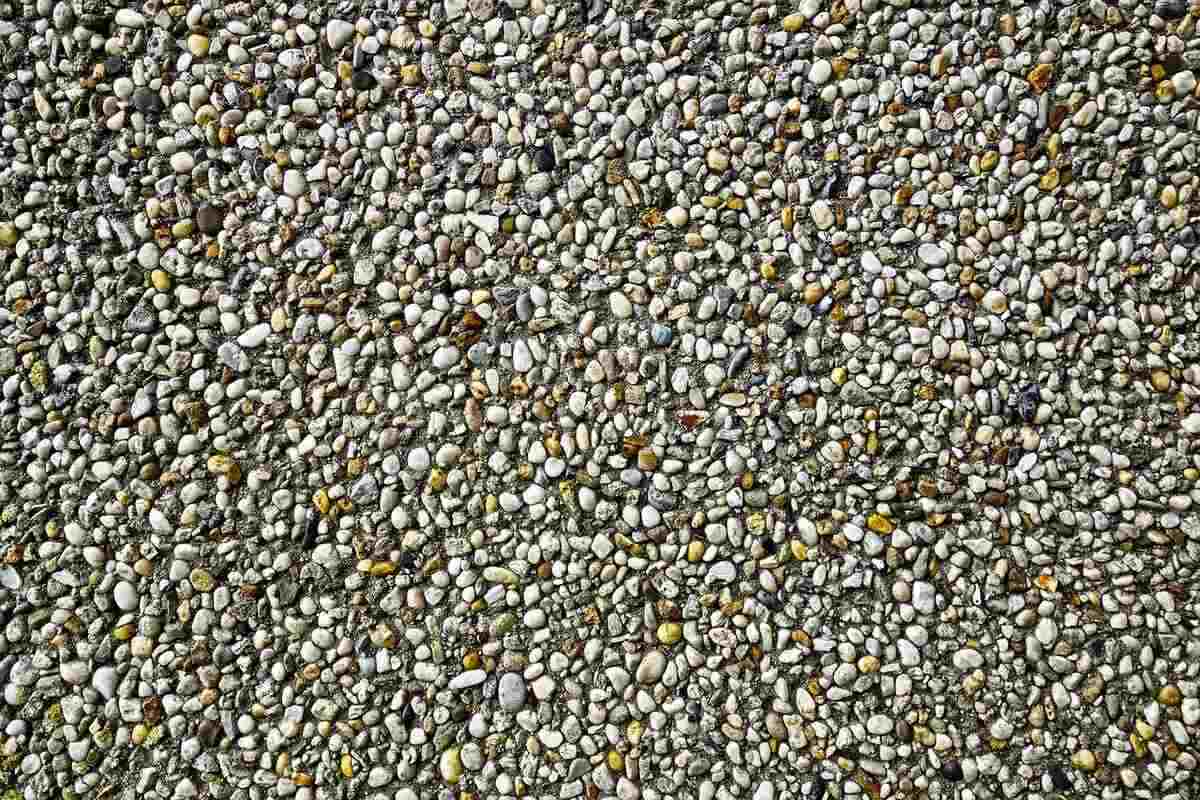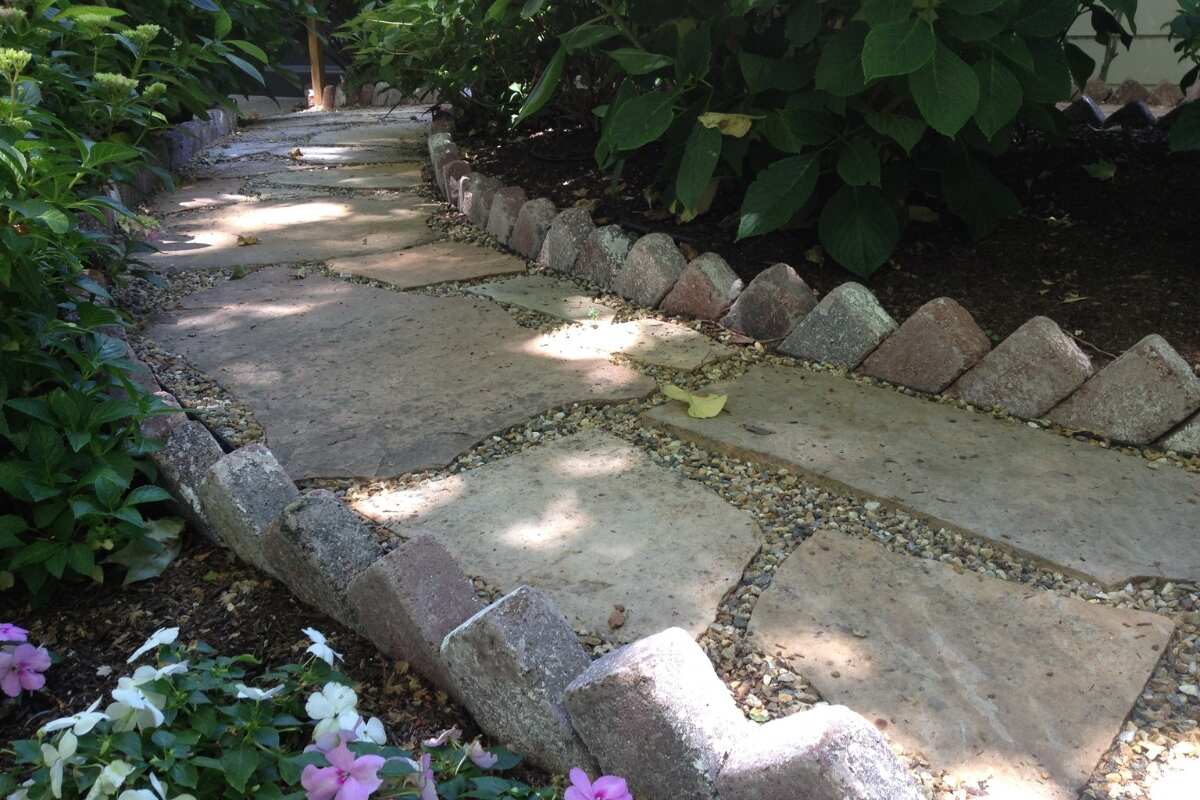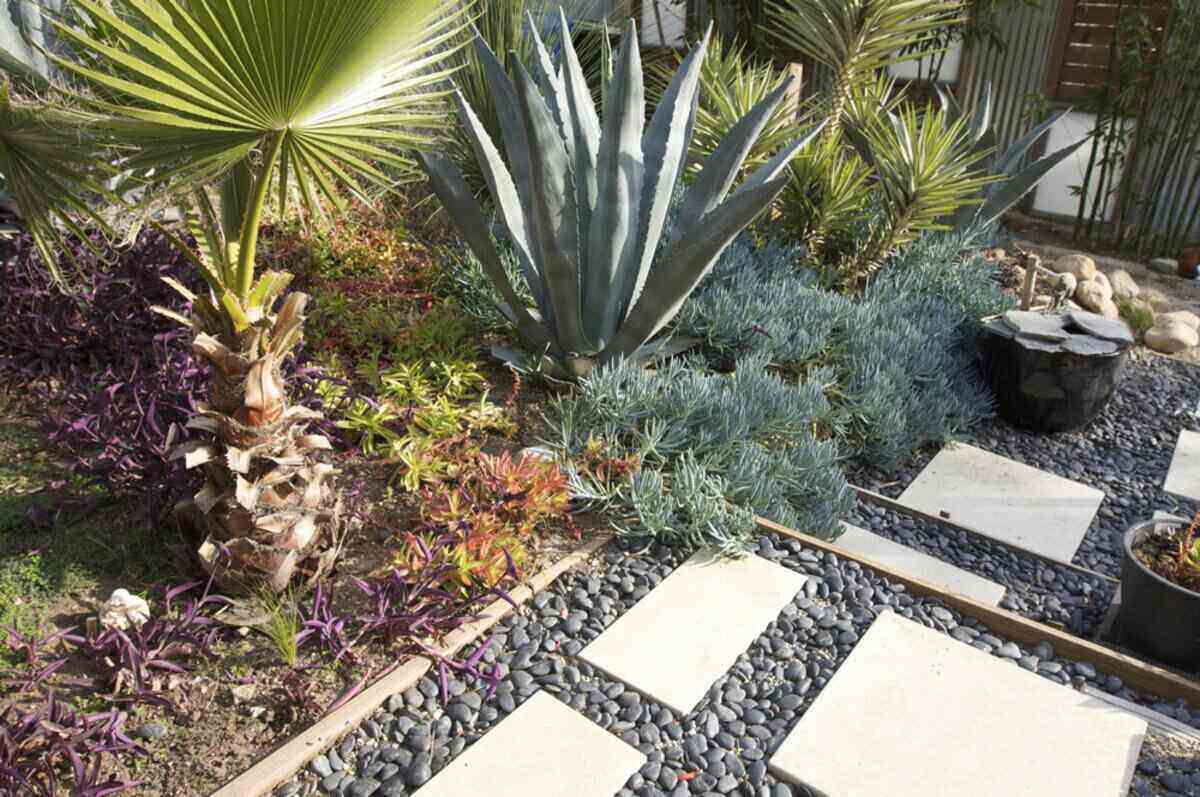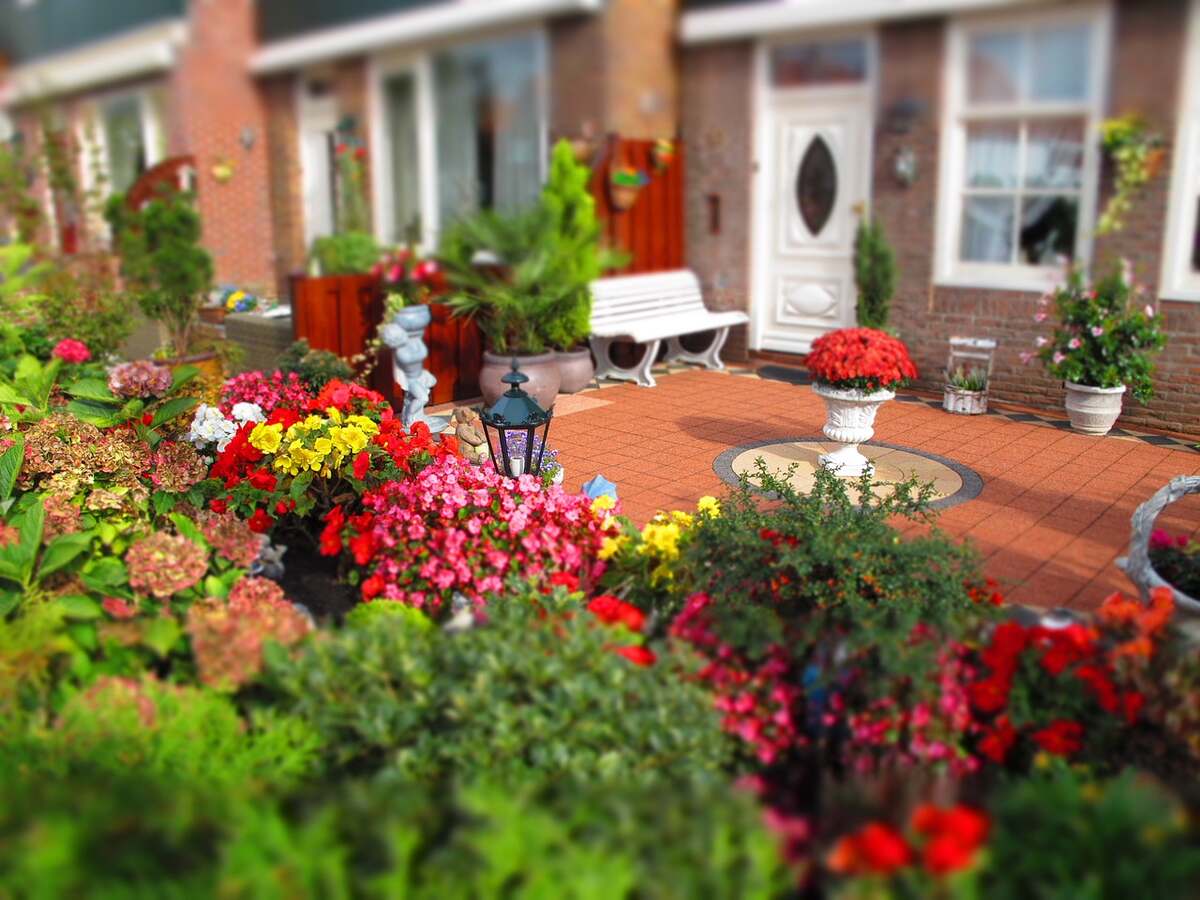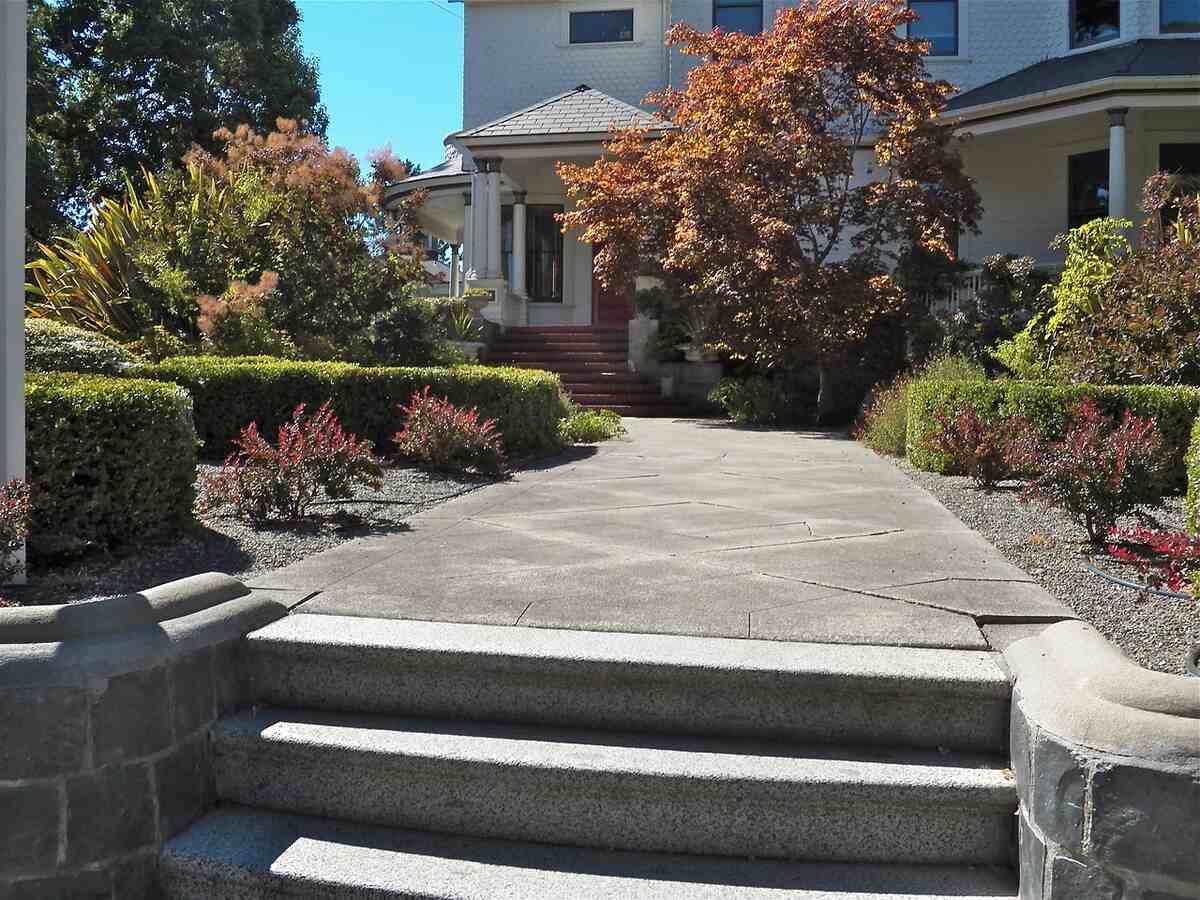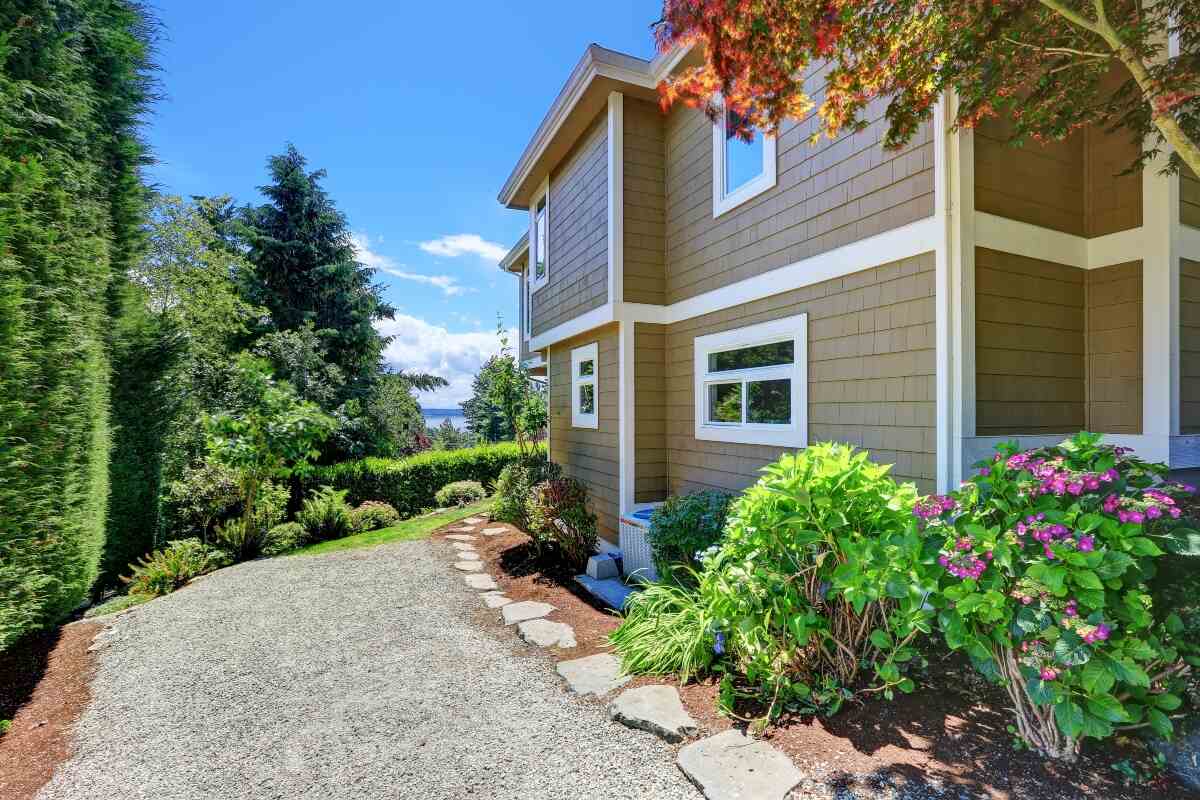
A narrow side yard, typically reserved for HVAC units and utility boxes, is often forgotten when it comes to landscaping. But a narrow space doesn’t have to equal limited creativity. Leverage every inch of square footage you have with these 15 side yard landscaping ideas.
- 1. Create a Path
- 2. Add Some Lighting
- 3. Build a Garden Retreat
- 4. Connect With a Deck
- 5. Create a Playspace for the Kids
- 6. Fit in a Plunge Pool
- 7. Make an Outdoor Gallery
- 8. Add Some Arches
- 9. Expand Your Garden Space
- 10. Create Extra Storage Space
- 11. Make a Space For Your Dog
- 12. Set Up a Family Play Space
- 13. Raise Chickens
- 14. Create a Vertical Garden
- 15. Start a Container Garden
- FAQ
1. Create a Path
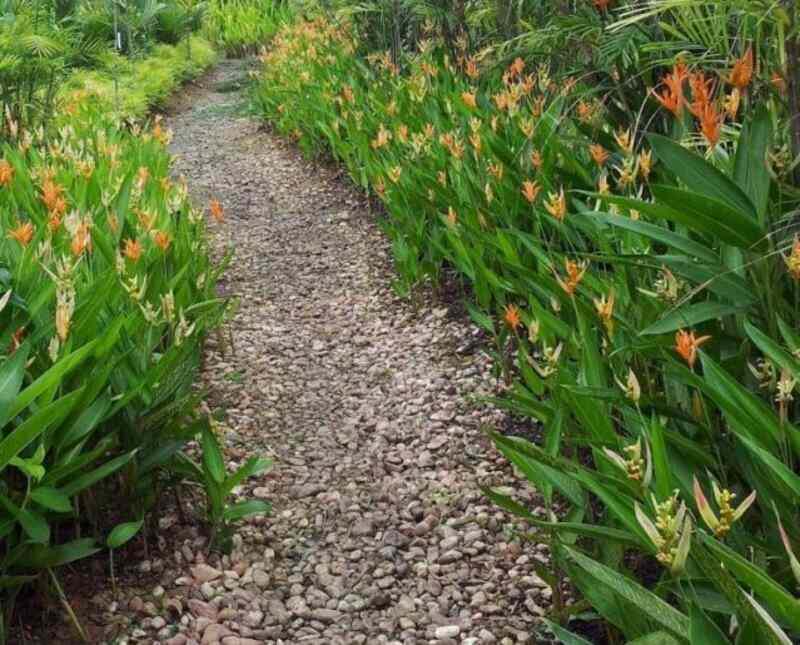
From a functional standpoint and to achieve some curb appeal, consider creating a garden path from the front yard to the back. Whatever your tastes or budget, there are several low-maintenance hardscape materials available.
Here are a few choices:
- Stepping stones
- Concrete pavers
- Stamped concrete
- Pea gravel
- River Rock
- Flagstone
Note: Looking for additional narrow side yard landscaping ideas to compliment your garden path? Why not line it with border plants, such as hostas, daylilies, black-eyed Susans, or boxwood shrubs? This will add a beautiful accent to your yard while making the most of the limited space.
2. Add Some Lighting
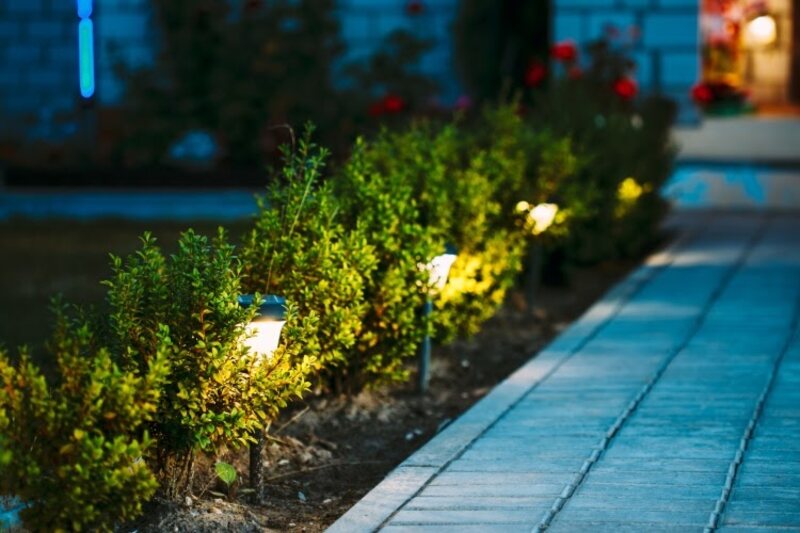
In addition, don’t forget about lighting your path. Lighting is important for safety and security. Try string lights along the side of your house or between house and fence. Another consideration is using low-voltage landscape lights as part of your side house landscaping project as a professional installation or a DIY.
If the yard is sunny, solar-powered in-ground lights are easy to install and a good way to reduce ongoing landscape lighting costs.
3. Build a Garden Retreat
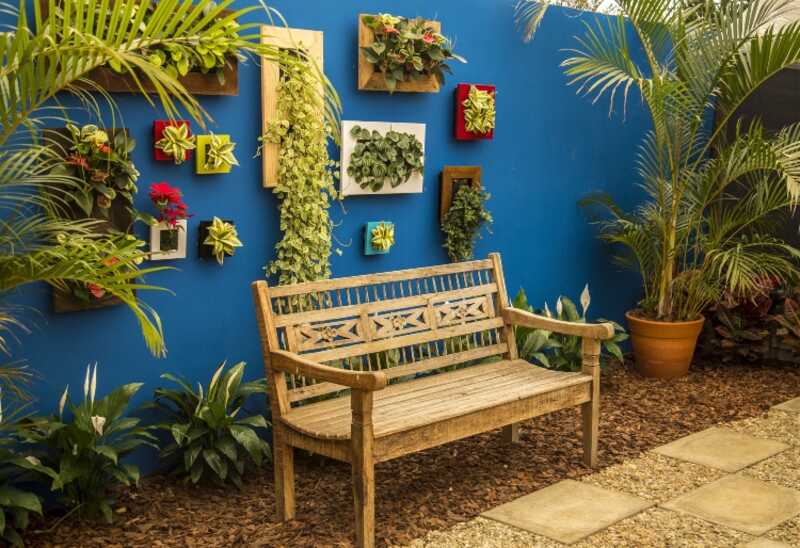
Utilize the area against your house wall to grow flowers and herbs or create a special area for a vegetable garden. Also, for more narrow side yard ideas, you could set up a trellis for vertical planting or hang planter boxes in a manner that resembles framed art.
If you have room and don’t mind the maintenance, a small water garden can create a spot for meditation.
Other options:
- Add a bench or lounge chairs.
- Set up a hammock.
- Add a small table and chairs to create a private dining nook.
4. Connect With a Deck
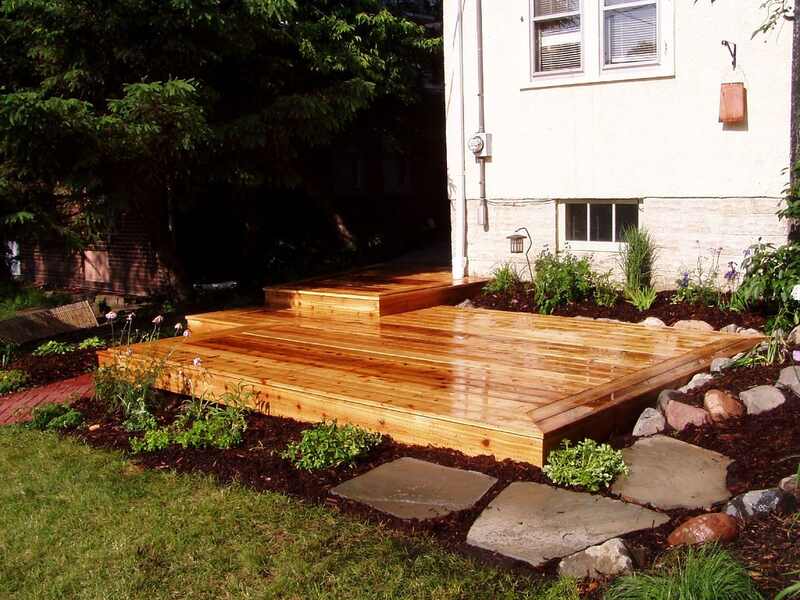
Backyard too small for a deck or patio? Construct one on the side instead. A leveled deck leading from the back door can add depth to your small space and provide the perfect seating area. Don’t want the maintenance of a deck? A small patio also can provide outdoor living space or serve as the perfect spot for your grill or a fire pit.
5. Create a Playspace for the Kids
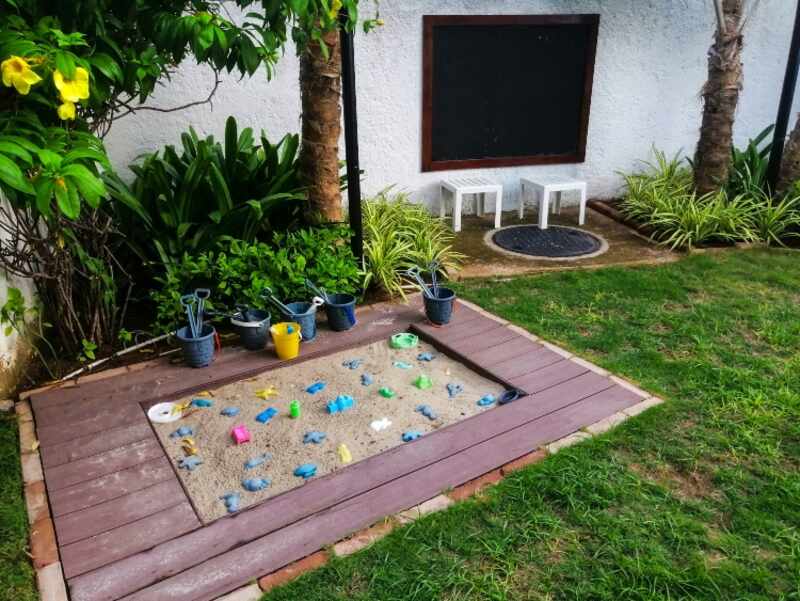
Give children their own space to play by converting the side yard into an activity space. A few ideas:
- Mount an outdoor chalkboard or sticky wall.
- Install a sandbox.
- Build a rock climbing wall, or install a climbing dome.
- Create a lawn-bowling set or a mini-version of cornhole.
- To keep the area clutter-free, use a trellis to hang small toys.
When planning an activity space, consider safety. Depending on your yard’s layout, you may want to install a gate, a fence, or both to keep your youngsters secure.
6. Fit in a Plunge Pool
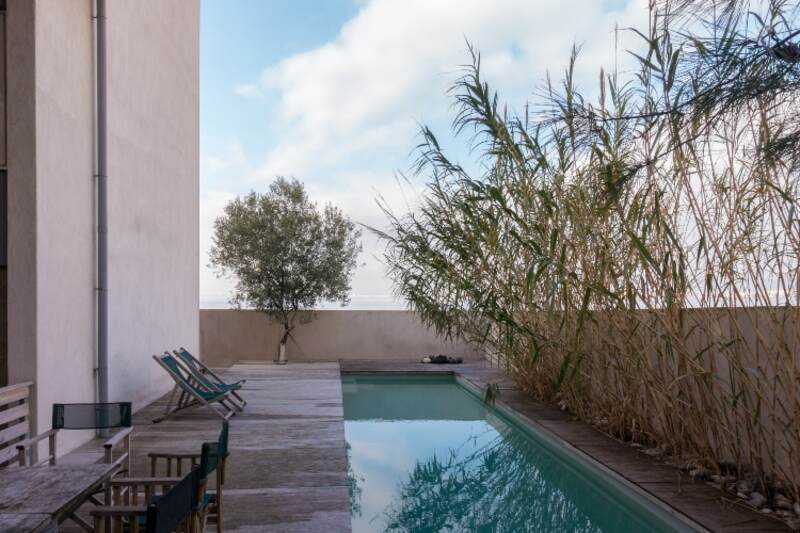
These narrow pools are an excellent addition to your vision for side-of-the-house landscaping, especially for small spaces: They’re easier to maintain and cost less to heat than a full-size pool. But as you plan, be aware of state and local regulations covering permits and pool placement, as well as pool fencing or pool covers.
7. Make an Outdoor Gallery

Have an eye for art but lack a green thumb? Cultivate a garden made mainly of statement sculptures or boulders. Garden statues — available in concrete, resin, and bronze — range from traditional to whimsical. Boulders can be clustered or used alone to provide a focal point. Surround your garden with ground cover, mulch, or pea gravel.
8. Add Some Arches
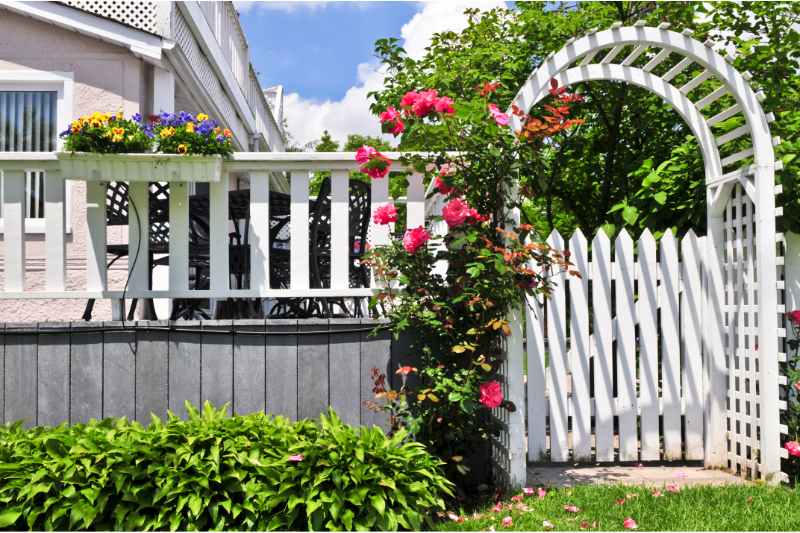
Arbors and pergolas can create an air of elegance for your narrow side yard. String lights over them and add seats to create an entertainment area or dining nook. Or use them as an extension of your garden design and train vines or climbing plants to grow up the sides.
9. Expand Your Garden Space
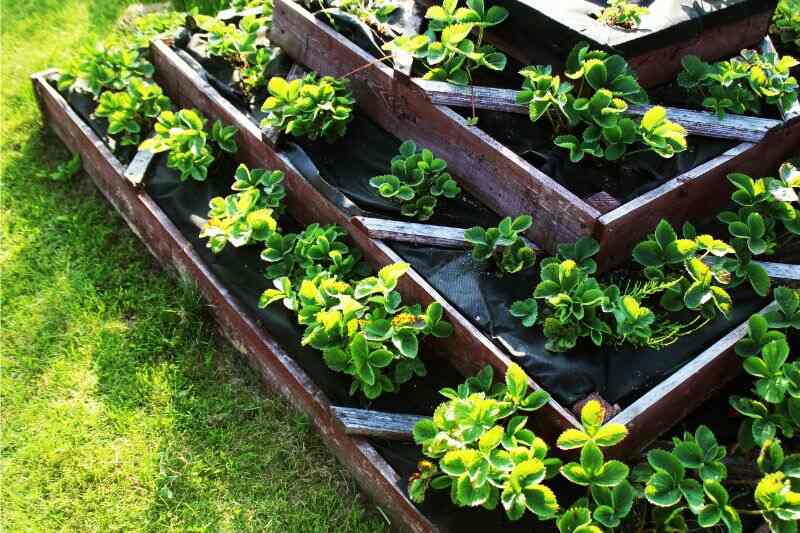
Is your backyard too shady for tomatoes, or too sunny for your lettuce plants? Depending on your home’s orientation, you can shift those plants and vegetables to a side-yard garden.
Some ideas:
- Build a garden bed.
- Place a series of raised garden beds near the side of the house.
- Add a potting bench.
- If space allows, consider a small greenhouse to enjoy harvests all year.
10. Create Extra Storage Space
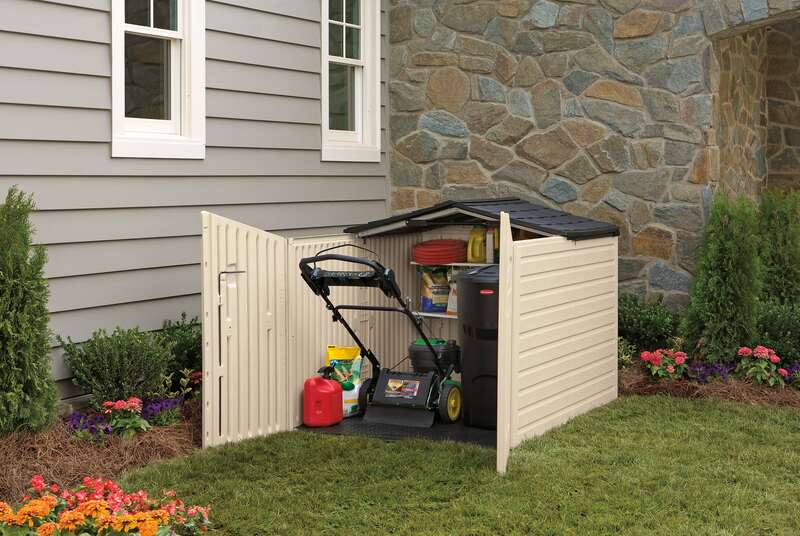
If your garage is overflowing with garden tools, toys, and patio furniture, use your side yard to store those items. Outdoor storage containers are available in sizes that can store everything from toys to string trimmers. If there’s room, consider building an outdoor shed to hold large items, like your mower. For security’s sake, consider a privacy fence or gate for the area.
11. Make a Space For Your Dog
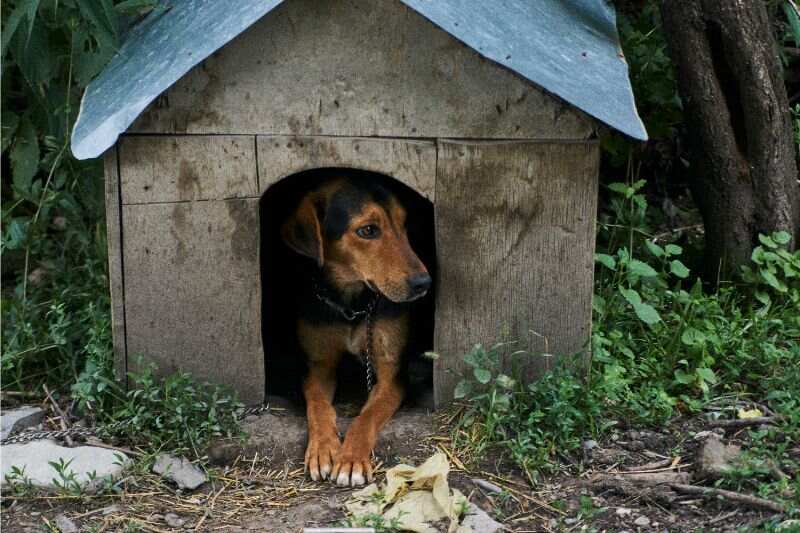
Your best friend might appreciate having an outdoor space of his or her own. With appropriate fencing, your side yard could serve as a dog run. However, a dog run obviously needs some maintenance. Prevent spotty grass in your lawn by putting down mulch or dog rocks to create a potty area. For a lawn look without any mowing, install artificial grass for an easier-to-clean surface.
12. Set Up a Family Play Space
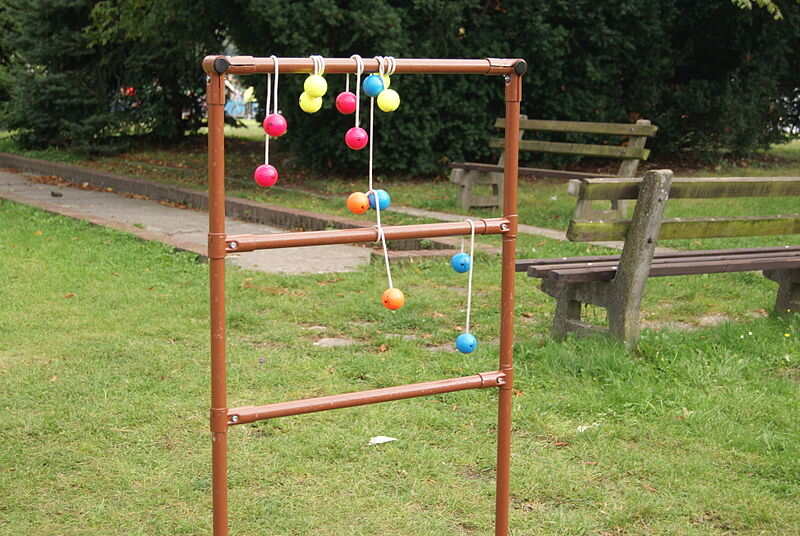
You’ve found a game or two that the whole family can enjoy, but you don’t want to move equipment in and out of the back or front yard? Your side yard might be a great place to set up a horseshoe pit, a cornhole set, or even a ladder toss setup. Perhaps you want to teach the kids the finer points of golf? That side yard might make a nice putting green.
13. Raise Chickens
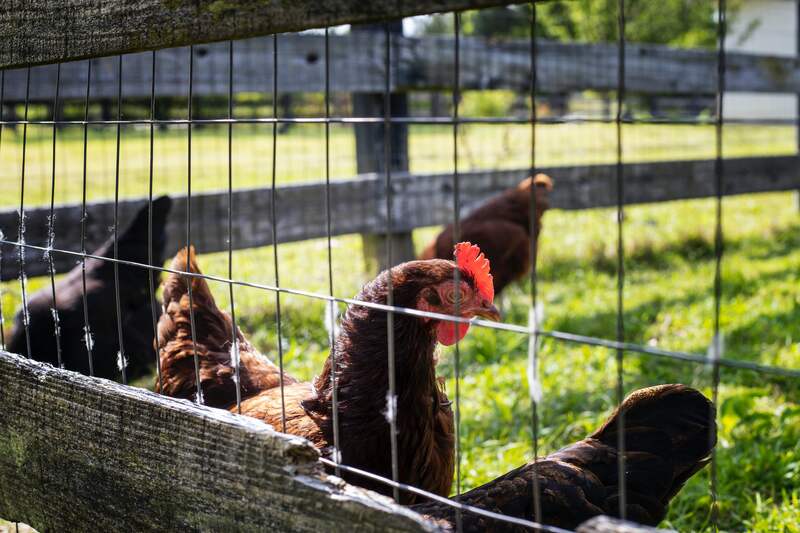
If you want a steady supply of eggs, your side yard might be a good place to raise chickens. However, a few things to keep in mind:
Create the proper environment. Be sure your yard has space for proper fencing and a coop to keep your chickens corralled, sheltered in bad weather, and safe from predators. Contact your local Extension office for information.
Check local ordinances. Some cities and homeowners associations don’t allow backyard chickens or may have specific requirements for fences and coops. Check before you buy that first set of chicks.
Have a plan for those eggs. Some breeds of chickens can lay up to 280 eggs per year. Multiply that by the number of hens in your flock. Eggs can be frozen, or you can keep your relatives and neighbors supplied with the excess. If you’re planning on selling them, check state and local ordinances on labeling and other sales requirements.
14. Create a Vertical Garden

Are you addicted to plants but don’t have the room in your side yard? Don’t worry. You can satisfy your plant cravings with a vertical garden, also known as a green wall. This concept optimizes height instead of square footage on the ground.
Green walls can be constructed using various materials (wood, metal, plastic, or concrete block) and hold different growing media (soil, felt, fiber) that the plants sit in.
A type of vertical green wall is called a plantable retaining wall. This type of wall comprises individual blocks, each containing a hollow core known as a planting pocket, which can be used to grow plants and shrubs.
An added benefit: A green wall has the potential to block some of your view of your neighbor’s unkempt yard. Having said that, it’s a good idea to consult your local township to determine if you need a permit for height restrictions, etc., since it’s a standalone structure.
15. Start a Container Garden
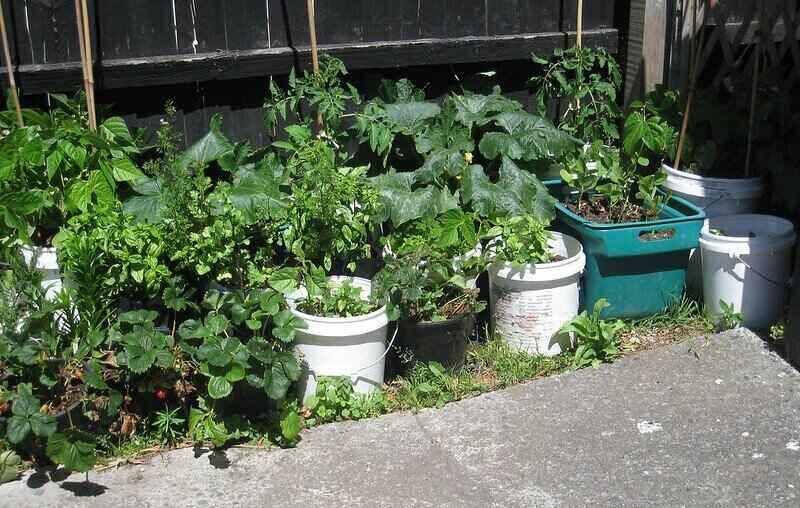
Container gardens are a great way to add a touch of greenery to your side yard. You can play around with different types of plants to create interesting combinations that suit your personal style. For instance, you can use a mix of tall and short plants with varying textures to create a layered look.
When choosing containers for your side yard garden, the possibilities are endless. You can use traditional terra cotta pots, or mix things up with more unconventional containers like old wheelbarrows, baskets, or even grow bags. Choose containers with good drainage that are the right size for your plants.
Finally, one of the great things about container gardens is the ability to switch things up with the seasons. You can play around with different color schemes and plant combinations to keep your garden looking fresh and interesting throughout the year. For example, you might opt for bright, bold colors in the summer, and then switch to more muted tones in the fall.
FAQ
What Are Good Materials to Use For a Small Deck?
That depends on your budget and your ability to maintain the deck. Wood decking choices can range from pressure-treated to more-exotic woods like Ipe. Composite and PVC decking is more expensive but considered to be more durable. Remember that any deck material needs an annual cleaning and inspection to keep it in top shape.
What Kind of Water Fountain Should I Have?
Space may be the deciding factor for this water feature. For a small backyard or narrow side yard, a wall fountain or Japanese fountain is a good choice. Or consider a self-contained fountain that can go anywhere. A large, tiered fountain needs some space, and likely the help of a professional.
What’s the Difference Between an Arbor and a Pergola?
A pergola is an outdoor structure that uses columns or posts to support an open roof of beams and rafters. An arbor is used as an entryway to a garden or yard. It’s smaller than a pergola and consists of two to four posts with a slatted roof.
When to Call in the Pros
For help bringing your side yard design ideas to life, enlist the help of a landscaping professional. Your local pros can install flower beds, lay down walkways, plant trees, and build arbors, patios, and decks, among other things.
Most importantly, they’ll listen to your landscape design ideas, develop a customized plan, and suggest low-maintenance side yard ideas as well.
Main Image Credit: Adobe Stock
